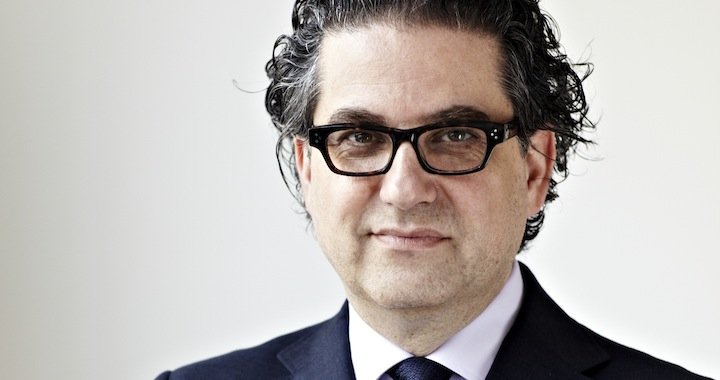
The Search for Historical Longevity
29/04/2013
 Produced with the support of ABLV Charitable Foundation
Produced with the support of ABLV Charitable Foundation
For the last forty years London’s, the prominent Marlborough Fine Art gallery, which has been in the business since 1946, has occupied the ground floor of an 18th century building at 6 Albemarle Street. Since its inauguration, the gallery has represented such outstanding classics as Francis Bacon, Henry Moore, Frank Auerbach, Lucian Freud and many others, and is often credited for developing London’s modern art market. Today, Marlborough galleries can be found in Barcelona, Madrid, Monte Carlo, Santiago de Chile, and New York, but the latest addition to the worldwide gallery group is Marlborough Contemporary, which opened in October 2012 just above its predecessor – Marlborough Fine Art in Mayfair.
Despite the close proximity of the two galleries, Marlborough Contemporary offers a completely new curatorial perspective, and providing it is the former Director of Curating at Goldsmiths, Professor Andrew Renton. Having built some of the most significant collections of contemporary art in Europe, Andrew Renton doesn’t seem to be too hesitant in entering the fiercely competitive gallery scene, but is convinced that every good idea takes at least five years to grow.
Arterritory.com had the pleasure to meet Andrew Renton in London, in his new home – the Marlborough Contemporary gallery, which overlooks the historical art district.
Was it a challenge to build a new gallery upon an existing brand?
It was terrifying, but thrilling. It almost feels like Marlborough is an institution, rather than just a gallery. It has that level of gravitas over the 65 years that it’s been around. It was definitely a challenge, but the gallery also needed a change. It needed to re-evaluate how to work in a contemporary way. Contemporary artists have very different needs. They have very different concerns and anxieties. Part of those challenges was learning how to make that work within this frame. I think that’s partly why we started with a new entity. It’s a challenge and it’s not going to stop being a challenge, but it’s definitely worth doing. I am very confident about that.
As I understand, you had no previous experience in selling art before taking this position at Marlborough Contemporary.
There is a joke in our catalogue… in 1997, when I ran a project space, artist Ian Whittlesea and I did a show together, but we never sold any art. At that time it was inconceivable that we would sell anything. So one day, someone came in and bought a book that Ian had made. It cost twenty pounds and I didn’t know what to do with them. (Laughs) So I called Ian and we decided to go out for a curry. That was it. As a seller, that was my experience.
I do, however, have a lot of experience in buying art. I have been involved in buying art and building collections for a long time, so, as much as I’ve been a curator, I have been involved in the business of art. I took an active role in the creation of the Cranford Collection, which is one of the biggest collections of contemporary art in London. It now holds about 1000 works and I bought them. So, in a sense, I was familiar with the negotiation. That was always a component to the art world that involved transactions. I was not naïve or over-idealistic to pretend to ignore that. It is actually an integral part of the way the contemporary art world flows, the way things happen.
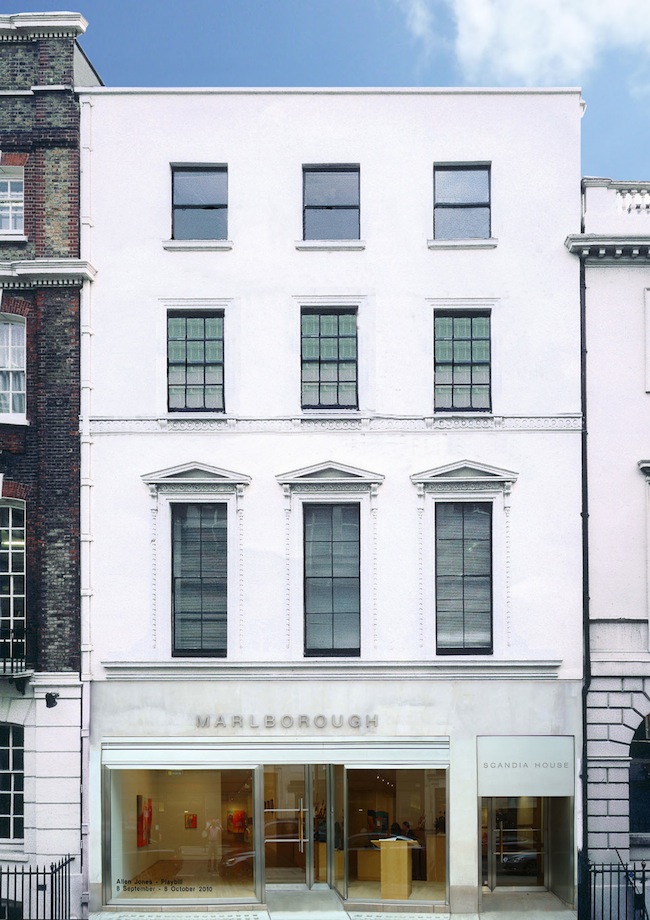
So how did you decide to step into the commercial world of art?
I am a great believer that you do business because it lets you do things. It enables things. It makes amazing things happen. For me, the dream was to be able to work with the artists that I believe in on a daily basis, which is what I do now. Nothing, however, had prepared me for the intimacy of it. As a curator, you develop projects, but what happens at the end of the show? The interesting thing about the relationship between a gallerist and an artist is this intimacy and continuity. The thing that surprises me the least is the business side, because, if you believe in what you are selling, then it’s relatively straightforward.
When you were offered the position, was your immediate reaction – yes, let’s do it! – or did you have your doubts?
My immediate reaction was that they’ve got the wrong guy. I thought they had googled the wrong guy. The truth is, I wasn’t even conscious that they had approached me. They talked to me, but they did it in a very discrete way, so I thought that we were just chatting. (Laughs)
There were two reasons why I was interested in taking this position. One is that before Tate Modern, the YBA’s [The Young British Artists], East End, and before there was a real contemporary art scene in London, Marlborough was a place where you could see incredible works of contemporary art. I remember coming here as a teenager and seeing, for example, new Francis Bacon paintings, which already at that time the museums could no longer afford. You were seeing history in the making. If you didn’t see it at the Marlborough, you were not going to see it anywhere. It was an incredible opportunity to see the great works of our time.
The other reason is the opposite extreme. Indirectly, I’ve been working in the art market for 20 years, but actually I had not done any business with Marlborough. Maybe I was working in a more contemporary area, and they were more consolidated in modern art, but it was still strange. So it seemed as an opportunity to develop a relationship. In contemporary terms, there was also an opportunity to give a little bit of a polish to the brand. It is a great brand, but today it is associated with one generation, rather than the many generations that it’s worked with for 65 years.
At one point, there was an idea to run both galleries as one, but I thought that it wasn’t right. What they do downstairs is Marlborough Fine Art, and it’s incredible. It’s really the history of the 20th century, and I think it’s an incredibly successful business. It tells the story of art history. My instinct was that it wasn’t appropriate for me to change that. More interesting was the opportunity to create something new.
So where did you start?
I think if you make something new, if you make a new gallery, you have to start from zero, so we made a separation between the two galleries. The last time Marlborough had a new gallery was in 1960, and it was called Marlborough New London Gallery. Clearly, they didn’t come up with anything more creative at the time. (Laughs) One of the first shows in Marlborough New London was by the young Frank Auerbach. Now he’s probably the most senior British painter still alive. I think for my generation, and for your generation, it’s quite hard to look back and understand just how fresh some things were. We forget that art is about this constant displacement of the new. The thing that really interested me in running a new gallery was that there are lot’s of contemporary art galleries out there, but Marlborough gives me a perspective; it gives me a sense of a bigger picture.
What do you mean by that?
As a curator, I have always felt that you need to know two things – where an artwork fits in terms of art history, and what is it in physical terms. Art history very often talks about the connectedness between works of art, but it rarely talks about the physicality of it. I think that curating is a practice version of art history, plus the physicality of the work. I feel very strongly about curating as a practice, rather than curating as an academic subject. So when you look at the legacy of what’s been shown downstairs – Rothko, Pollock, Picasso, Van Gogh, etc. – and then you have a younger generation, the job is to make sure that you are working with artists who you believe have the possibility of a historical longevity. You can’t get it right all the time, but you can try. The job is not to sell art. The job is to create an extended story, and then the art will sell itself.

Marlborough Contemporary. Photo: Francis Ware
But today, the gallery wouldn’t be able to survive if it wasn’t for the sales. You can believe in an artist, but you also have to run a business.
Absolutely. I think there is a reality of commercial galleries, which is that some parts of the activities support others. There are some artists who just don’t sell, but you know that they are important. And then there are artists who sell really, really well. That’s part of the job. It’s a strange business model – running a gallery. Your overheads are huge. It’s unending. It’s exhausting. It’s fascinating for me as someone who has participated in a commercial side of the art world in a much less continuous way. I ran a business for many, many years with no overheads. If you are a buyer, it’s a much easier game.
On the other hand, when it goes well, it’s kind of amazing. Then, however, you have another job on your hands – you have to manage the situation where an artist is suddenly in demand. The show that just closed by Jason Brooks, was sold out. In 2013, I think it’s quite something. So now we face an interesting time with him. If we push it too quickly, it will be a disaster. Our job is to make sure that in five years' time, and then again in ten years' time, he’s in a great position. We don’t want him, in two years' time, to be last year’s thing.
So how do you deal with that? How can you sustain the collectors’ interest in an artist?
Well, it goes back to that timeline. Art history is a long thing. You take it slowly. It’s possible to hype things, but it’s really impossible to sustain hype. The most interesting thing is to slowly develop an artist. We had a situation where maybe 15 people really wanted to buy the same paintings. But that’s how you could already start to become a parody of yourself – by reproducing the things that you know are popular. You have to resist the temptation of an easy sell. Of course, we are here to sell art. The whole thing doesn’t work unless you sell art, but I’m very conscious that it doesn’t mean anything unless we generate a much more expanded idea of an artist’s career – beyond gallery exhibitions.
I’m lucky because I’m working with a group of artists who are really receptive to having me around. I’ve been going to some of these artists’ studios for years, so it’s very natural. That’s how you can be in a conversation about the work that’s in progress, which, when you are a gallerist working with an artist, may not always be the case. It’s a privileged position that I have. We do have big responsibilities and they are not just about selling the work, but there are also these big monsters called “the art world” and “the art market”, which are constantly pressuring you to do all sorts of things.
What should an artist expect from his or her gallery?
(Laughs) It’s clear that no one really has a standard model. Over the years, Marlborough has achieved something that many galleries haven’t. The gallery works with artists that it has shown for decades. Our most senior and outstanding artist is Frank Auerbach. He has continuously shown in the gallery for 50 years. So there is a relationship, a support structure, and it’s almost certainly a daily conversation.
What to expect? I guess it’s a collaboration, a development of an artist’s profile and helping him or her make interesting contacts, but then there is the thing about money… That works in a variety of ways, but I think the simplest way forward is to think about the business relationship as a partnership. Our job is to enable artworks to be made, even if we don’t necessarily have any chance of selling them. So we have those responsibilities, but equally we have to make it possible for an artist to sell. You can only be uncompromising up to a point, because if you don’t reap the rewards of some kind of success, you are limited in what you can do.
You have to take on an artist because you think they are amazing. I’ve learned enough in these few months to realise that the things you thought were commercial – are not, and the things that you think you will never sell – somehow, they sell. So the lesson is really simple – don’t choose the artists because you think they are going to be commercial; choose the artists because you think they are amazing. Then, somewhere along the way, it will work.
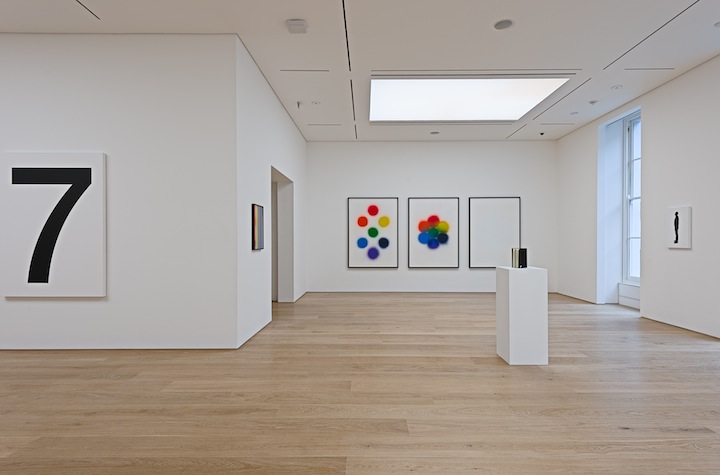
Marlborough Contemporary. Photo: Francis Ware
What do you think characterises a collector of contemporary art today?
The collectors today are very different from the collectors 20 years ago, and they are certainly different from the collectors 30 or 40 years ago. They are very sophisticated. They have so much experience and access to information, and you have to give them the respect that they deserve, in relation to the work that they are looking at. So our job is to be really articulate about the art that we work with. To be articulate – to be able to talk about art – is an incredibly hard job. But for me, that is the starting point – engaging in a dialogue with the artists and people who want to make that commitment of buying art.
Today the collectors are also very prepared to find a way to accommodate art in their life. Very often, this means making all sorts of compromises to enable a work of art to be seen. So it’s not just about hanging pretty pictures on the wall. The collectors that I have worked with have been, literally, prepared to tear their house apart in order to accommodate contemporary art. That’s where it starts to become interesting. You can’t underestimate what is possible out there in the market.
The first generation of conceptual art, for example, was conceived as a way of standing outside of the materiality of the market, but it’s fascinating how the market finds a way of accommodating that. There is nothing that cannot be sold. (Laughs) Of course, the first generation of conceptual art is now very expensive, and these artists are now treated almost as old masters, but the market has taught us how to sustain, what would appear to be, ephemeral works of art. It is fascinating how quickly we learn, and how quickly the collectors learn to embrace that and to make that part of their work. I think the best collectors today are the ones who are looking like that.
It also just reinforces the fact that there is no such thing as a really commercial work of art. There are just really great works of art. It’s a big statement. But, of course, we do know that some things are going to sell…
Even though you say that the collectors are eager to engage in less conventional artworks and artists, at the same time, it seems that most of the established galleries are dealing with already well-known names. You can especially see that during the art fairs. What is the reason for that?
There are several articles that have been written about how people are looking towards modernist classics, rather than the new contemporary art. People often think that it’s because there is a crisis in contemporary art. I believe that the crisis is not just an economic crisis. The reason why people want to stick to the names that they know and recognise is because contemporary art is difficult. Contemporary art can appear to be without context, and it takes us back to the original point – that without context, there is nothing. So what a lot of galleries are doing, and what a lot of collectors are doing, is anchoring their contemporary collections to slightly more established things.
Everyone says this is to do with money, but I think it’s to do with something much bigger and more conceptual than that. It’s to do with wanting to find a place for your contemporary art. You don’t have that problem if you buy old masters or Renaissance paintings. But if you are dealing with the very front line of contemporary art, you are always going to be asking, where does it fit? Today we are seeing people playing it safe. Clearly, that also makes a lot of sense mathematically, because there are certain things that will always be important to us. A Picasso will ways be a Picasso.
So then this weird logic occurs – someone might buy a Picasso that’s worth 10 million, for 20 million. Weirdly, in this stratospheric world, 20 million is fine, because it’s still a Picasso. During the last couple of years, we have seen Giacometti going for twice the price that it should, and Munch’s Scream being sold for four times the price that it should have. What’s interesting about this is that, not only is someone paying for the security of the iconic name and object, but they are also, in a very odd form of capitalism, creating their own market, and they are defining their own values. So to overpay, also is to redefine the value of the work. You can only do that at the very, very top end of the market. But it’s fascinating. It’s a slightly separate conversation to what we have been talking about, but it also tells you that those incredibly recognisable brands have, surprisingly, no limit to them.
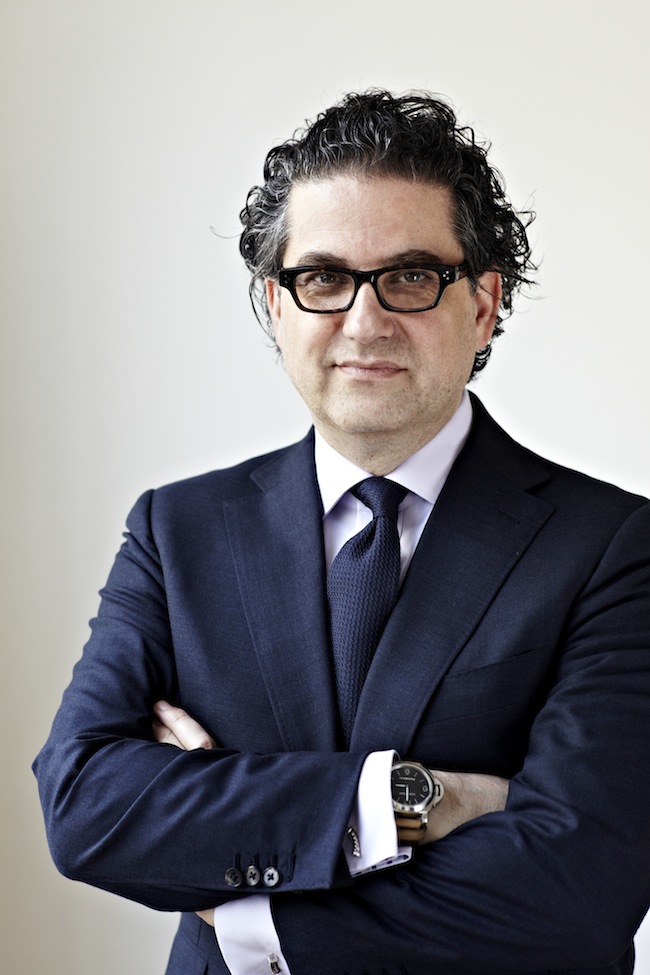
Andrew Renton. Photo: Charlie Campbell
There is, of course, a limit to what you can sell one of those works for. It is precisely because it is a brand, because it is recognisable, because other people have it. Markets used to be only about supply and demand, in the art world you call it connoisseurship, but, interestingly enough, there are certain practices in contemporary art that have taught us that uniqueness isn’t necessarily the best thing for the market. So actually, artists like Andy Warhol, Anish Kapoor, Damien Hirst and others who work with a multiplicity of work and who create artworks that are very similar to each other, and therefore are quantifiable and instantly recognisable as belonging to the artist, have this peculiar status of being unique, but at the same time – just like the other. That moving forward is another interesting model.
25 years ago, when Warhol died, Warhol’s market went down. It was because there was a realisation that there were probably tens and thousands of works out there, and therefore, there was a potential for an oversaturated market. Just looking at where we are now, it’s clear that there has been a re-education and rethinking about what that meant. If you are a trader on Wall Street, this is not a surprise to you because you don’t really want to be selling one pork belly, you want there to be lots of buying and selling of pork bellies. Multiple trades generates longevity.
So how does this relate to young artists and developing their careers slowly?
Well, it’s really tough. I think it’s our job to insulate the artists against this aggressive trajectory, where the top of the market is flying. The very bottom of the market is also doing all right, because the collectors are happy to spend a few thousand pounds on art, but the whole middle is very quiet. It’s much tougher. Then you should really be looking for the things that you believe are of true quality. It’s different from five years ago, when there was a real speculation. Today, speculation is much less wide-spread. Of course, many people who did speculate, did not benefit as much as they might have, so there is a recognition that, if you are involved in art, you have to think in longer terms. Our job, as a gallery, is to make things happen over time.
In a time like this there are opportunities… when I first started getting involved with art in the late 1980s, there were a lot of things happening in London. There was a generation of artists, who were doing amazing shows on their own. But the reason why there were these amazing things happening was because the galleries couldn’t sell any art anyway. There are those moments in history, during an economic crisis, when you see a real flowering of creativity.
Are we now in a similar time?
Yes. I hope so. If we don’t take those opportunities, then we are crazy. The difference, however, is that in the 1980s the art world was small; today the art world is huge. There are around 300 shows happening in London each month. How on earth are you going to see them all? There is just too much to see. But, of course, there is a way of getting your art seen, there is a means of distribution that didn’t exist before, so there is a cause for optimism.
Our job is also to look further than our doorstep, and further than London, as the capital of contemporary art in Europe, and New York as the capital of contemporary art in the States. There are other places to look. I’m very conscious that we are slightly lazy because London has proved to be a centre. Look at all the galleries that are around us. Within 100 meters from here, there are dozens of amazing galleries. Several of them have come from the States, because they also want to be part of this particular discourse and this particular market. There are trajectories that pass through London that don’t pass through New York or anywhere else.
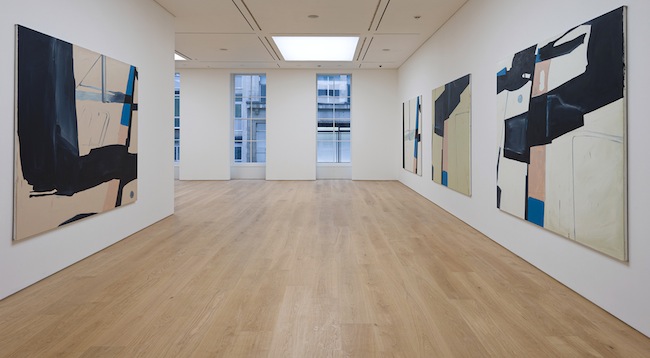
Marlborough Contemporary. Photo: Francis Ware
What would attract a gallery from New York to open a space in London?
There is a Russian and an Eastern European community based in London that feels more welcome here than they do in the States. There also is the legacy from Asia – from China and India that comes through here. There is a Middle Eastern connection. There are all of these pathways that have a historical presence for political and economic reasons. This is why London has become a hub. Why wouldn’t a New York gallery open in London? There is a desire to tap into communities that use London as a base.
New York has a scale of operations in terms of contemporary art, but London brings in more territory. That would seem to be the case. At the same time, you can’t be too confident in terms of your location. At the moment, it works incredibly well with London and New York. I don’t think that either is going to weaken by this point. The question is – where else is there?
I think people will probably start to look for new footholds in certain territories. Hong Kong may prove to be very useful, maybe somewhere in the Middle East. There are other territories, but in the end, New York has its tradition in contemporary art. There is this very well-discussed notion that New York invented Modern art. And there is a fantastic Post-War legacy that has been re-incorporated back into Europe. It’s interesting to think about Britain as a centre of contemporary art. Five and a quarter million people went to Tate Modern last year. That’s a lot of people. Of course, most of them are non-specialised, but even if one present is specialised, that’s kind of amazing.
How would you want to see your gallery moving forward?
Our job is to nurture artists, and I guess I would still want to be in a position where we are able to do that in ten years' time. But I would also want to be able to look back at this moment and say that we took something that had an incredible promise, and look at how it has grown. It’s a continuous process. When I took this on board, I assumed it would be a long-term job. Our job is to move forward. That’s our responsibility. You and I should have a chat in five years' time and then in ten years' time, because I think all good ideas take at least five years to develop.